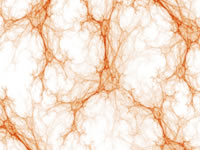


This, along with particle image velocimetry (PIV) provided for the velocity and direction analysis of fluid flow movements within the pore space of a planar 2D model. Images of the flow were captured from the model using a high-speed camera. The pore fluid was embedded with silver-coated hollow microspheres that allowed for their florescence and tracking their movement within the model when illuminated by a laser light source. Custom 3D printed jigs were employed for accurate positioning of the particles to ensure that particles have the same flow area within the soil. Magnified transparent soil particles made of hydrogel were cast in 3D printed molds. Several representative images of Ottawa sand were obtained using dynamic image analysis (DIA), for comparison with flow through perfect cylinders. An innovative method is introduced in this study which permits visualization of interstitial fluid flow through the pores of a saturated synthetic transparent granular medium at the microscale. Past studies have mainly focused on exploring macroscopic flow to infer microscopic phenomena. Pore scale analysis of flow through porous media is of interest because it is essential for understanding internal erosion and piping, among other applications.


 0 kommentar(er)
0 kommentar(er)
